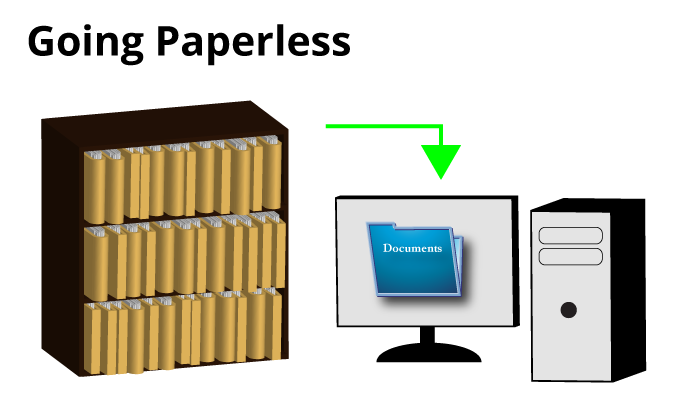 A thoughtfully designed, systematically implemented Enterprise Content Management (ECM) system can provide a wealth of benefits from increased processing speed to decreased error rates to increased client satisfaction. Approached the right way, an ECM project is likely to be very successful and can greatly minimize the amount of paper your organization produces and manages. On the other hand, when ECM software is implemented as a “band-aid” without much forethought, staff involvement, or defined process, the odds are it will fail.
A thoughtfully designed, systematically implemented Enterprise Content Management (ECM) system can provide a wealth of benefits from increased processing speed to decreased error rates to increased client satisfaction. Approached the right way, an ECM project is likely to be very successful and can greatly minimize the amount of paper your organization produces and manages. On the other hand, when ECM software is implemented as a “band-aid” without much forethought, staff involvement, or defined process, the odds are it will fail.
Often this occurs when different groups within an organization are asked to “share” a system that wasn’t designed for that purpose. To save time, money, or effort, the company gives many departments access to an ECM platform without first standardizing terminology, processes, rules, etc. The result is a system that leaves users unhappy because it…
- Is slow and unresponsive
- Has no common naming conventions
- Makes it difficult to find documents
- Doesn’t have appropriate retention/disposition rules and processes
- Is not in sync with other core systems
The Power of a Well-Defined Process
When we hear about failed ECM implementations and paperless initiatives, it’s not hard to pinpoint where things went wrong. It’s typically right at the beginning. Systems implemented “on the fly” exhibit all the symptoms listed above (and others) primarily because no set process was followed.
When a proven methodology is adhered to, each aspect of the deployment is carefully analyzed and evaluated. As a result, you end up with a platform that is highly standardized and that has not simply adopted the inefficient and ineffective processes and workflows and version control used by each of the groups involved.
To ensure that your push to go paperless through an EMC implementation succeeds, your procedure must include:
- An enterprise-wide analysis and paperless processing plan
- A comparison of plan objectives to software capabilities
- Cross-departmental participation from all groups affected in all phases of the implementation
- A thorough ROI evaluation and adequate budget allocation
- The selection of a skilled and experienced integrator
- Availability of internal resources from kickoff through post-implementation fine-tuning and beyond
With a commitment to follow a proven process and devote the necessary time, effort and funding to a paperless initiative, your organization can enjoy tremendous success in its ECM rollout. And while reaching a true zero-paper state is a lofty ambition, you can certainly begin to approach that mode and the significant increase in operational efficiency that comes with it.
About the Author
 Charles Weidman is the President and CTO of Buddha Logic. Charlie has over two decades of experience in the design, development and implementation of content services and business process management solutions. He is also an expert in robotic process automation. Charlie founded Buddha Logic with the idea that well-architected digital document capture and management processes are both beautifully simple and powerfully logical. Find and connect with Charlie on LinkedIn.
Charles Weidman is the President and CTO of Buddha Logic. Charlie has over two decades of experience in the design, development and implementation of content services and business process management solutions. He is also an expert in robotic process automation. Charlie founded Buddha Logic with the idea that well-architected digital document capture and management processes are both beautifully simple and powerfully logical. Find and connect with Charlie on LinkedIn.
